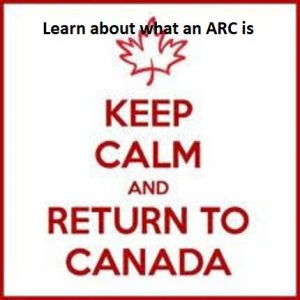Returning to Canada After You Receive a Removal Order
It may be extremely overwhelming when you receive a removal order from the Canadian government. It basically means you are being informed to leave Canada within a certain period of time. Depending on the type of removal order you have received, you may or may not be inadmissible to Canada. Do not be to scared, though. The first thing to do is to calm yourself down, and understand what a removal order is and what an Authorization to Return to Canada application is. In this article, you will learn how to deal with your removal order so that you may return to Canada, depending on your specific situation.
Consider What Type of you received
- Departure Order
If you receive a departure order, you must leave Canada within 30 days. You must also inform a CBSA officer that you are complying with a removal order, so that they can record the date you exit, and provide proof that you have complied with the order. If you do these two things, you will not have trouble entering Canada in the future.
- Exclusion Order
If you receive an exclusion order, you must leave Canada immediately, and inform a CBSA officer that you are complying with the exclusion order, for the same reason as above. With an exclusion order, you cannot return to Canada for 12 months after departing. Once the time period of the ban has passed, and you complied with the exclusion order in the first place, you will be permitted to re-enter Canada without any special application.
- Deportation Order
Unfortunately, if you receive a deportation order, you can never return to Canada, without first applying for an authorization to return to Canada document. You must leave Canada immediately if you receive a deportation order, and inform a CBSA officer as you leave. 4. If it was a “Direction to Leave Canada”
- Refugee Applications and Removal Orders
If you are applying for refugee status in Canada, you will always be issued a conditional removal order. This is not necessarily a removal order. If your application for refugee status is approved, the removal order will be removed. Nevertheless, if your application is refused, the removal order will take effect. You have the right to appeal the decision and make an attempt to be permitted to stay in Canada, though.
- Administrative Deferral of Removals (ADR)
This happens when an individual who is the subject of a removal order, but this individual is from a country which is in a state of crisis, and the individual would be subject to undue harm if forced to return to their country of origin. ADR is meant to be a temporary measure when immediate action is needed to temporarily defer removals in situations of humanitarian crisis in specific countries. An ADR is currently in place for certain regions in Somalia, the Gaza Strip, Syria, Mali, the Central African Republic, South Sudan, Libya, Yemen, and Burundi. Once the situation in a country stabilizes the ADR is lifted and the CBSA resumes removals for individuals who are inadmissible to Canada and have a removal order in effect.
- Temporary suspension of removals (TSR)
Essentially, the difference between the TSR and the ADR are that an ADR is generally put in place for a short period of time. Very similar to the ADR program, the TSR program stops the enforcement of removal orders in countries where there is a risk to the entire civilian population. For example, armed conflict within or an environmental disaster resulting in a substantial temporary disruption of living conditions, would result in a TSR. Canada currently has a TSR in place for Afghanistan, the Democratic Republic of Congo, and Iraq.
Apply for an ARC if Necessary
If you have determined you will require an ARC to return to Canada, it is important to understand the application process. Like any applications to overcome inadmissibility, the approval or the refusal is completely based on the officer’s discretion. Therefore, it is important for you to submit a well-prepared application.
What should be Included in an Authorization to Return Application
You will need the following in order to submit an ARC application:
- Temporary Resident Visa Form
- Proof of strong ties to home country
- An explanation regarding the reasons for the removal order/ the reasons it was received (You must be able to show your situation has changed from what it was when you received the removal order)
- Prove that you will not repeat the behavior that caused the order to be issued
- Show the length of time since the order was issued
- An explanation of your current situation
- An explanation of the reasons why you want to enter Canada.Other travel history, showing you have complied with other countries regulations
- Government Fee
Contact Akrami & Associates
Applying for an ARC may be confusing and overwhelming. This is where professional help comes in handy. At Akrami and Associates, we can help you prepare for the aforementioned requirements and documentation before you attempt to enter Canada. These applications are difficult applications to pursue on your own and it is highly recommended that you seek out professional help before attempting to submit the application. Akrami & Associates has worked with many different immigration issues. We have helped many of our clients with their ARC applications successfully. If you have any questions regarding ARC applications, please feel free to contact Akrami & Associates at 416-477-2545 or info@thevisa.ca for more information or to book a consultation. With Akrami & Associates, there is always a way!
With Akrami & Associates, there is always a way!

